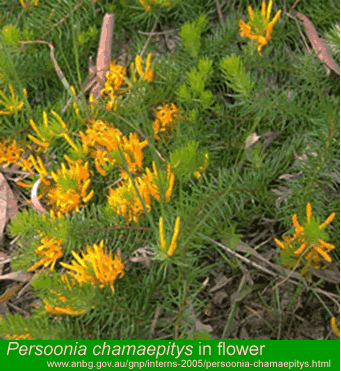Summary of final report on the Australian Flora Foundation funded project:
Chris Nancarrow
Institute for Conservation Biology and Law, University of Wollongong
Grant Details Final Report
Although hybridisation is commonly used to develop plants more suited for commercial use, we have little understanding of hybridisation in nature. The genus Persoonia contains a number of species which appear to have evolved in the same location (sympatric speciation), and which produce intermediates which may be hybrids. The species provide good material to examine the processes of natural hybridisation. The three Persoonia species chosen for study were P. chamaepitys, P. myrtilloides and P. levis all of which occur in the Blue Mountains region in eastern Australia (200 km west of Sydney). Persoonia chamaepitys is not known to hybridise in the wild, whereas P. levis and P. myrtilloides both appear to generate hybrids when in sympatry with other Persoonia species.
This project, supported by the Australian Flora Foundation, was a study to examine two questions: (i) Can putative hybrids be identified in the field, based on vegetative and floral characteristics? (ii) What is the potential for interspecific pollination to produce fruits and therefore hybrid offspring?
It was found that there appears to be considerable potential for hybridisation between Persoonia myrtilloides and P. levis in areas of the Blue Mountains where these species co-occur. In some sites, there are adult plants with morphological characteristics that are intermediate between plants of either species in pure stands. Leaf characters, especially leaf length, provided the greatest discrimination. Hand pollination studies confirmed that plants in these two Persoonia species are self-incompatible and therefore require pollinators to transfer pollen between plants.
The potential for gene exchange between these two species in creating a hybrid zone appears to be asymmetrical. Tthere was a greater likelihood of pollination and fertilisation being successful with P. levis as mothers than P. myrtilloides.

